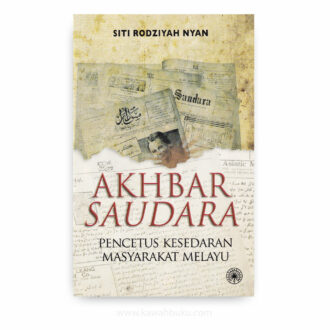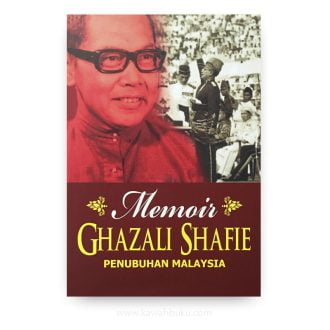A History of Selangor and Negri Sembilan is a volume that put together three papers published by MBRAS which are A History of Selangor, and A History of Negri Sembilan by R.O. Winstedt, and Sri Menanti by R.J. Wilkinson. A few neoliths, a find (at Batang Berjuntai) of three socketed iron tools of the type known as "ape's bones" (tulang mawas), a bronze bell-like article dug up at Klang along with more ancient iron socketted tools, these few exhibits in the Museums of Kuala Lumpur, Taiping and Singapore are the only relics of early civilisation in the tract of country now known as Selangor. Writing in 1225 but quoting the Ling wai tai ta of Tcheou Ki'u-fei which antedates 1178, the year of Sri Vijaya's last embassy to China, Chau Ju-Kua puts among the dependencies of that old Buddhist kingdom of Palembang (or perhaps of its successor, Malayu or Jambi) a place called Fo-lo-an which may stand for Puloan, which again may be the Islands of the Klang delta. In the Nagarakrtagama Klang is mentioned along with Sungai Ujong, then Sang Hyang Ujong, as subject in the middle of the XIVth century to Majapahit.
Reputed to have been used by the eunuch Cheng Ho who seven times visited the overseas "barbarians" between 1405 and 1433 A.D., Chinese charts mention Langkawi, Kedah river, Pinang island, Pulau Sembilan, South Shoals (at the mouth of the Klang), Selangor highlands, Klang river, Tumasik (or Singapore) and many other places round the Malay Peninsula. Even in the fifteenth century when the whole tract was subject to the Sultans of Malacca, it was not yet a united country but consisted still of separate river states of which only Klang and Jeram are mentioned in the Malay Annals. Those annals relate how in the reign of Muzaffar Shah (1445-1458) the people of Klang deposed their chief (penghulu) and asked the Sultan of Malacca to appoint another, whereupon the post was given to Tun Perak, a member of the great Bendahara family who had settled at Klang. The next Sultan of Malacca, Mansur Shah, (1458-1477) had married a Chinese Hang Li Po, daughter of the Emperor of China, whose escort were the original settlers at Bukit China, Malacca. By her Sultan Mansur Shah had a son Paduka Sri China, whom he made raja of Jeram near Langat. Even now (1612), adds the author of the Malay Annals, "his fort exists and his people at Jeram are very well-mannered, if one meets them."
In the time of 'Ala'u'd-din Shah, the first Sultan of Johor (1529-1564) the chief of Klang was his vassal and bore the title of Mandulika, while Selangor also was subject to Johor, representative of the old Malacca empire, and was in charge of a Sri Agar 'diraja son of Tun Isap Berakah, the Bendahara Paduka Tuan of Johor. It is possible that Mansur Shah appointed his half-Chinese son governor of Langat on account of the presence there of Chinese miners. ďEredia, writing in 1613, records that when the Portuguese owned Malacca, the yearly output of tin from Klang was more than one hundred bares. Newbold records a tradition that, while the Bugis occupied the coast, the right bank of the Klang river was inhabited by Malays and the left by Biduanda Jakun. If the tradition is correct, this division of river may go back to days of Malacca's suzerainty
Meanwhile, Negri Sembilan, or the Nine States, is a confederacy unknown to the Portuguese d'Eredia in 1613, to the author of the Malay Annals in 1612 and to the Dutch merchants in their Daghregister or daily journal, which has been printed down to 1682. The original confederacy must have been created after the coming of the Raja Melewar, founder of the present royal house, in 1773 AD. What states originally formed the Nine is uncertain. Was it ever a confederacy or even a congeries except in name?
The usual list is: Klang, Sungai Ujong, Naning, Rembau, Jelai, Ulu Pahang, Jelebu, Johol and Segamat. That list gives the States in the order in which they occur in history as more than place names, though it is not the list of any confederacy. All these places had Minangkabau settlers, but Naning was always vassal to the owners of Malacca, Klang was subject first to the Malay Sultans of Malacca and Johor and then became Bugis, Segamat was always a fief of those same Malay Sultans, Ulu Pahang and Jelai always subject to the rulers of Pahang. There may have been imperium in imperio, Minangkabau settlers in places subject to other than Minangkabau rule yet accepting a Yam-tuan of their own race as the arbiter of the quarrel between themselves. But if there was a real confederacy, it was that extant today and its constituent states were Sungai Ujong, Rembau, Jelebu, Johol, Ulu Muar, Inas, Gunong Pasir, Terachi and Jempul. Mostly, the settlers were agriculturists, but it must have been their experience of gold-mining in Sumatra that led a few of them as far afield as Jelai in Pahang.













Reviews
There are no reviews yet